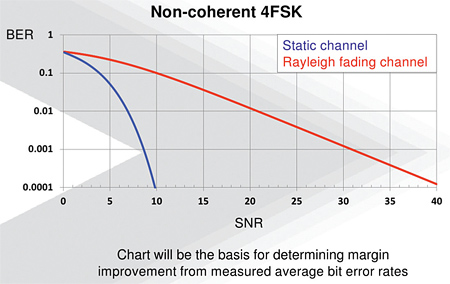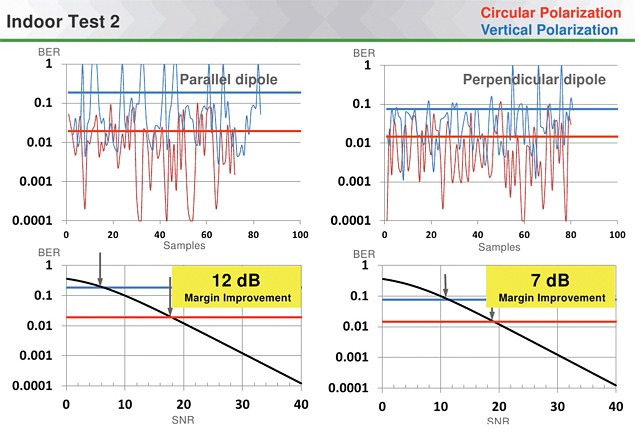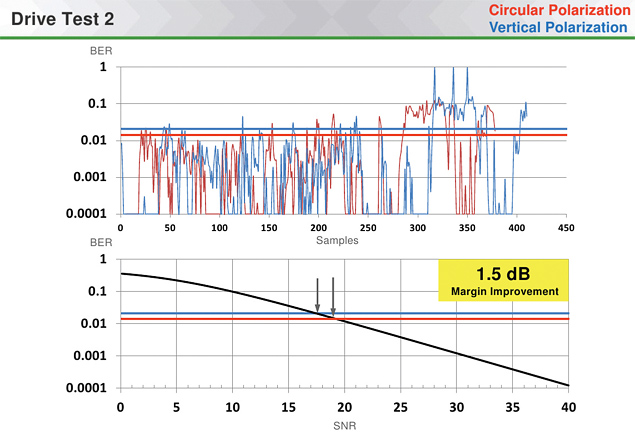Revisiting Circular Polarization
Mobile TV broadcasting to handheld devices and car-top antennas and the need to reach indoor antennas has led to increased interest in elliptical and circularly polarized antennas.
Antenna manufacturers like this because most TV stations will need new antennas for elliptical or circular polarization. Transmitter manufacturers like it because this requires adding transmitter power unless antenna directionality is increased, usually not a good idea.
It isn't surprising circular and elliptical polarization (EP) was a popular topic again at the NAB Show.
WHAT IS CP?
I've described circular polarization in previous RF Technology columns, but since I'm still finding many people don't understand the difference between mixed or slant polarization and circular polarization it's worth revisiting.
Circular polarization (CP) requires the electromagnetic wave to rotate in polarization as it leaves the transmit antenna.
Generating a rotating electromagnetic wave requires careful antenna design. If separate horizontal (H) and vertical (V) elements are used, the phase difference between them has to be maintained over the operating frequency range of the antenna and at different angles and distances from the antenna. New broadband panel antennas from several manufacturers offer this capability.
Simply splitting power between separate V and H polarized antennas won't generate CP or EP as the distance between the antennas makes it impossible to maintain the phase relationship between the antennas. "Slant" or "mixed" polarization, where signals from the two antennas combine into a linearly polarized transmitted wave with a polarity somewhere between H and V (varying with the angle from the antennas) at an effective radiated power equal to the sum of the H and V powers.
A linearly polarized dipole receive antenna will receive a stronger signal from a slant antenna when it matches its linear polarization. It will be higher than the signal from a CP or EP antenna, but 90 degrees away from that polarization the signal will be in a null, unlike a perfect CP signal where the signal doesn't change at any polarization.
REAL-WORLD TESTING
At the 2011 NAB Show Broadcast Engineering Conference, John L. Schadler, director, Advanced Antenna Systems Development at Dielectric (now SPX Communication Technology), described real-world testing comparing a vertically polarized (VPOL) Andrew DB411 vertical dipole array and a circularly polarized (CPOL) TLP8B-CP slot antenna operating at 447 MHz. At distances more than three miles from the tower estimated field strength into a vertically polarized antenna was the same for both antennas.
The testing was done using ham radio D-Star digital radio equipment modulated with non-coherent 4FSK with help from the West Central Florida Group Inc.
Measurements were taken in open areas outdoors and in the city; indoors in a mall and office complex; and with antennas inside a vehicle and mounted on the outside of the vehicle.

Fig. 1: SBR to BER conversion chart For measurements outdoors (pedestrian) and inside buildings, a stroller was outfitted with dual rotating antennas, one rotating horizontally and the other rotating vertically about their centers. Note that the horizontally rotating antenna is always horizontally polarized (HPOL), while the vertically rotating antenna rotates through all polarities. BER was converted to SNR margin using the calculated relationship between the two for a static channel (line of sight dominant) and for a Rayleigh (no dominant path) fading channel. (See Fig. 1)
Overall, outdoor tests showed about the same 8 dB improvement when using CPOL for both antennas. While you would expect the CPOL to have an advantage over the VPOL-only transmit antenna on the horizontally rotating antenna, it didn't.The reason was that small-scale fading rotated as much vertical component into the horizontal plane as there was in the vertical plane. Multipath completely depolarized the signals.
Schadler pointed out the CPOL antenna provided better margin because "CPOL is made up of two orthogonal polarizations time-shifted by 90 degrees, so the odds of both polarizations destructively interfering at the same time and the same location is much smaller than a single polarization."
Indoor building testing showed a similar improvement—between 6.8 dB for the vertically rotating antenna and 8.3 dB for the horizontally rotating antenna. Inside the car, CPOL provided no advantage and only a slight advantage (1.5 dB) for a short monopole on top of the car.
When a larger monopole was used, CPOL provided a 2.5 dB improvement. The reason for this, Schadler revealed, can be found in Maxwell's equations, where a boundary condition states, "The E-Field tangent to a ground plane is 0." Plots from indoor and vehicular measurements are in Figs. 2 and 3.

Fig. 2: Indoor test #2 results

Fig. 3: Vehicle results using short monopole
These tests compared a VPOL linearly polarized antenna and a CPOL antenna. If an HPOL linearly polarized transmit antenna were used instead of the VPOL antenna, I would expect to see a much greater difference in the mobile whip antennas tests, particularly on routes with few obstructions to depolarize the HPOL-only signal.
When the test was over Dielectric donated the CP antenna to the West Central Florida amateur radio group. The hams reported that the new antenna allowed communications in locations unreachable with the old linearly polarized antenna.
Contact SPX/Dielectric for a copy of the paper "Reliable Mobile Services" for full details on the test.
Next month I'll have information on the new Hauppauge Aero-M USB tuner for both legacy and mobile DTV. I purchased one from the Hauppauge Web Store for $59 and opened it up to see what was inside. It could replace my old PCTV Model 801e Pro Stick as my main USB tuner for legacy ATSC, except for one problem.
Comments are welcome! Email me at dlung@transmitter.com.
The professional video industry's #1 source for news, trends and product and tech information. Sign up below.

Doug Lung is one of America's foremost authorities on broadcast RF technology. As vice president of Broadcast Technology for NBCUniversal Local, H. Douglas Lung leads NBC and Telemundo-owned stations’ RF and transmission affairs, including microwave, radars, satellite uplinks, and FCC technical filings. Beginning his career in 1976 at KSCI in Los Angeles, Lung has nearly 50 years of experience in broadcast television engineering. Beginning in 1985, he led the engineering department for what was to become the Telemundo network and station group, assisting in the design, construction and installation of the company’s broadcast and cable facilities. Other projects include work on the launch of Hawaii’s first UHF TV station, the rollout and testing of the ATSC mobile-handheld standard, and software development related to the incentive auction TV spectrum repack. A longtime columnist for TV Technology, Doug is also a regular contributor to IEEE Broadcast Technology. He is the recipient of the 2023 NAB Television Engineering Award. He also received a Tech Leadership Award from TV Tech publisher Future plc in 2021 and is a member of the IEEE Broadcast Technology Society and the Society of Broadcast Engineers.
